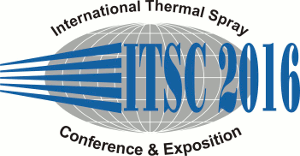
|
4946 |
|
High temperature corrosion of selected thermally sprayed coatings deposited by HVOF technology |
|
Zdenek Cesanek / Vyzkumny a zkusební ustav Plzen s.r.o., Czech Republic Jan Schubert / VZÚ PlzeH s.r.o., Czech Republic Ville Matikainen/ Tampere University of Technology, Finland Heli Koivuluoto/ Tampere University of Technology, Finland Petri Vuoristo/ Tampere University of Technology, Finland |
|
Corrosion resistance of coatings deposited by thermal spraying technology HVOF (High Velocity Oxygen Fuel) requires high density in coating and good adhesion to the substrate. The majority of thermally sprayed materials meet the requirements for high corrosion resistance in terms of their composition. However, the porous structure raises doubts about the performance of thermally sprayed coatings in providing of sufficient protection to the base material. In fact, corrosion protection is one of the basic coating functions. Anyway, in comparison with wear resistance research, no sufficient attention is dedicated to the issue of component protection against corrosion attack using HVOF sprayed coatings. This paper summarizes the results of high temperature corrosion tests for Cr3C2-25%NiCr, Cr3C2-25%CoNiCrAlY, TiMoCN-29%Ni (experimental coating), Stellite 6, NiCrBSi and Hastelloy C-276 coatings. The coatings were applied on Wr.Nr. 1.4923 substrate material, which is also used in nitrided state as an effective constructional material for components in power equipment. All evaluated coatings were deposited by HVOF (High Velocity Oxygen Fuel) thermal spraying technology. Hot corrosion testing was conducted in cooperation with the Finnish University TUT (Tampere University of Technology). Testing parameters were designed in a way that it could be further used as a comparative test. The salt mixture with composition of 59% Na2SO4, 34.5% KCl and 6.5% NaCl in an environment with 30% humidity was chosen as an aggressive corrosive environment. Furthermore, two temperatures of 525 °C and 575 °C were selected. The test duration was in both cases 168 hours. After the testing, all evaluated coatings were analyzed using scanning electron microscope (SEM) and afterwards elemental composition (EDAX) was conducted. Alloy based coatings showed very similar corrosion mechanism in the selected aggressive environment. The obtained results show that some of the evaluated coatings could protect functional part against high-temperature corrosion. |